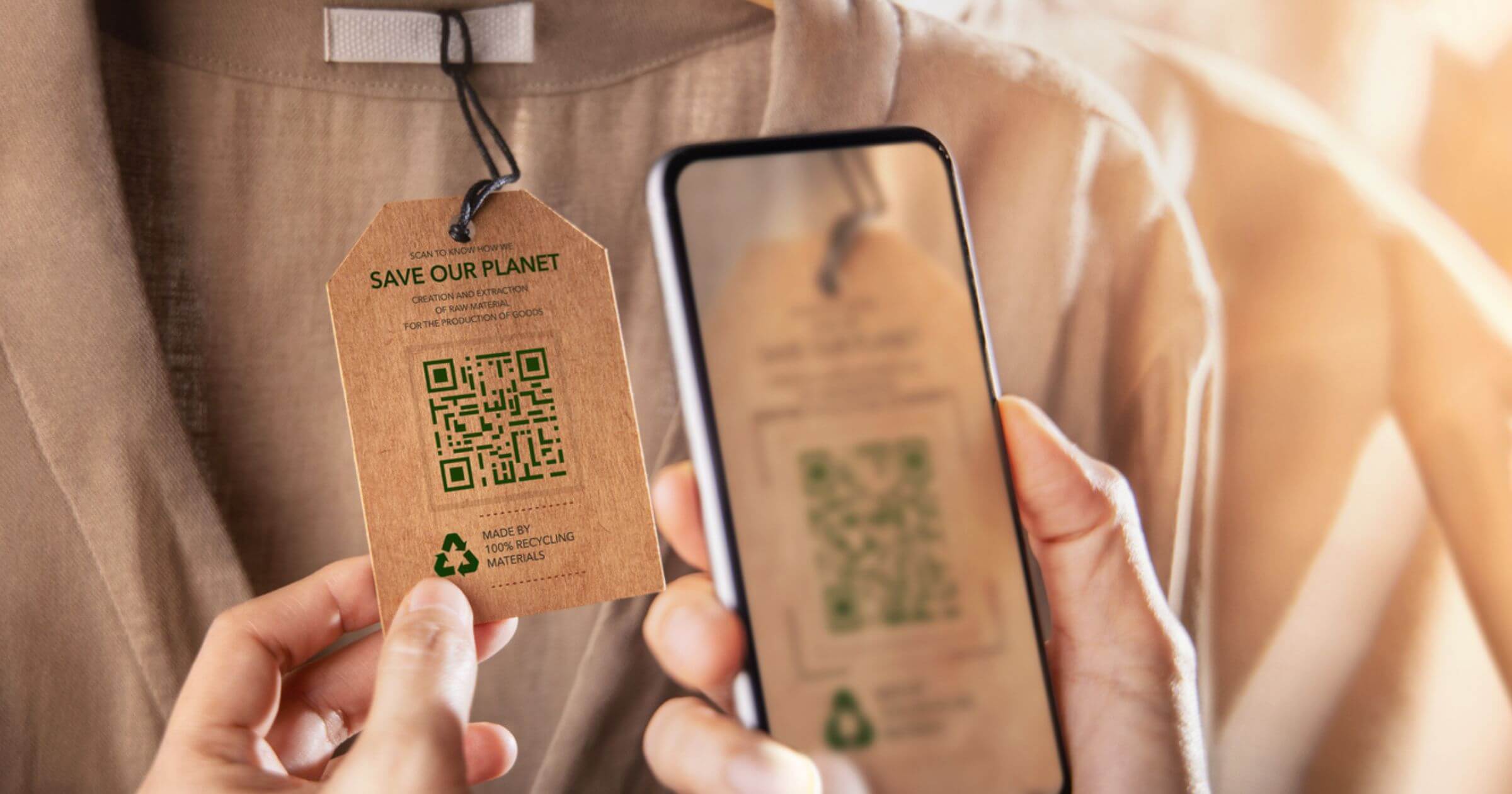
Tamara Davison
Tamara Davison is a journalist who specializes in sustainability and the environment. Reporting from around the world, she's seen firsthand the direct impact waste is having on coastal communities and our oceans. As a diver trained in ecological monitoring, the changes Tamara has seen in marine habitats inspired her to action. She's previously written for The Guardian, The Independent and the Evening Standard. She's also produced environmental documentaries for EuroNews.
A 2020 European Union report found that 53% of environmental claims made by businesses were vague, misleading, or unfounded. This is greenwashing — an unfortunate byproduct of a planet becoming more environmentally conscious.
Greenwashing occurs when a company makes false sustainability claims about its practices or campaigns. Alarmingly, this trend is on the rise.
To achieve a world in harmony with the environment, we need to stop greenwashing immediately. Shoppers and business owners should scrutinize green claims and ensure that falsehoods don’t go unnoticed.
Understanding greenwashing is also crucial to avoid it. In pursuit of a greener future, let’s take a look at greenwashing risks and how to spot them.
What’s on this page?
01 | What is greenwashing — and how does it work?02 | What are the different types of greenwashing?
03 | Why do companies greenwash?
04 | Top tips on how to spot greenwashing
05 | Examples of greenwashing
06 | Are there any laws against greenwashing?
07 | Summary
08 | FAQs
Key takeaways
- Greenwashing is when a company falsely claims that a product, policy, or activity is more environmentally friendly than it actually is.
- Common types of greenwashing include misleading labels, Irrelevant claims, deceptive imagery, trade-offs, and the lesser of two evils.
- In some instances, businesses may not even be aware that their messaging or practices are considered greenwashing.
- Countries around the world are introducing anti-greenwashing legislation, including the UK, EU nations, and a handful of US states.
What is greenwashing — and how does it work?
Greenwashing is when a company falsely claims that a product, policy, or activity is more environmentally friendly than it actually is. It’s a term used to describe misleading messages made by businesses that look like they have a positive impact on our planet.
As its name suggests, companies gloss over the details and make claims that distract from the truth. However, it works in various ways. For example, businesses may inflate environmental statistics, conceal part of their business operations, or promote impacts that aren’t true.
The origin of the word ‘greenwashing’ is often linked to an environmentalist called Jay Westerveld. In 1986, he wrote an essay that criticized hotels for urging guests to reuse towels to save the environment. In reality, the hotel allegedly wanted to reduce laundry costs. Alarmingly, over three decades on, instances of greenwashing seem to be becoming more prevalent.
What are the different types of greenwashing?
While there is no official description for greenwashing activities, it is widely recognized that they fall into multiple categories. Some of the main types of greenwashing include:
- Misleading labels — This happens when a company makes vague or unsubstantiated claims suggesting environmental friendliness. Labels might include words such as ‘natural’ or ‘climate neutral’ without any proof to back up these claims. One study by the Consumer Policy Research Centre found just 32% of 122 green claims they investigated offered supporting evidence or verification of claims.
- Irrelevant claims — Some companies might also make claims that aren’t relevant. Examples of irrelevant claims include suggesting something is biodegradable but it still takes decades to biodegrade. Or, claiming it's free from certain chemicals yet still includes countless others that are considered harmful. Given that 55% of consumers are more likely to buy something that’s marketed as environmentally friendly, this is concerning.
- Deceptive imagery — This happens when companies use natural imagery, like leaves or animals, to imply their products benefit the planet. Packaging might also look natural, free of bold printing and colors, suggesting that products are organic.
- Trade-offs — This happens when a company practices sustainability in some areas while neglecting it in others. An example could be when a company switches from plastic to paper packaging, yet fails to source the paper from sustainable forests.
- Lesser of two evils — With this, the sustainability claims might be true, but they distract from another unsustainable practice. Organic cigarettes are a prime example — they might be sourced from sustainable farms, but their plastic butts are still harmful to the environment, not to mention public health.
Why do companies greenwash?
There are many reasons why companies greenwash. Some businesses may want to attract new clients or adhere to emerging sustainable legislation, while others might do it to regain their reputation or keep up with competitors without actually putting in the groundwork.
In some instances, businesses may not even be aware that their messaging or practices are considered greenwashing. For instance, some companies simply fail to provide enough information or prioritize marketing over the details.
According to Al Jazeera, lack of regulation and oversight are the biggest reasons behind greenwashing. Companies simply aren’t being held accountable and so can get away with it.
How does this impact consumers?
At least 88% of consumers want brands to help them make a difference in sustainability. The rise of the conscious consumer — people who take environmental impact into account in their purchases — is a huge step toward creating a greener world.
However, greenwashing can mislead people into believing they are making environmentally friendly choices when they are not. This is bad for the planet, and quite frankly bad for morale. The rise of greenwashing may disillusion consumers and lead them to question the significance of their decisions.
To encourage consumers to do their bit, we need brands that are making a real difference instead of just pretending to be doing this.

Top tips on how to spot greenwashing
Although greenwashing is on the rise, people are also getting more informed on the topic. That means there’s a better chance of identifying greenwashing.
Here are four key ways you can spot greenwashing:
- Watch out for buzzwords
- Check whether claims are backed up
- Be cautious of nature-based imagery
- Do your research on companies
Watch out for buzzwords
Have you ever asked yourself what the label ‘green’ actually means? How about ‘planet-friendly’? We tend to associate these words with positive environmental impact, without realizing why. These are deliberately vague claims and are key examples of buzzwords that might point to greenwashing.
Check whether claims are backed up
Any environmental claims made by a company should be backed by evidence. This can be on the labels themselves, or via a page on their website. Look out for any official verification badges, such as the B-corp logo, that can suggest they have the backing of larger bodies.
Be cautious of nature-based imagery
One study found that green imagery appeared to sway public opinion. The researchers concluded that consumers viewing natural imagery positively led to more favorable judgments of the brands. Don’t let the pictures fool you. Make sure that any nature-based imagery comes alongside information that backs up the claims.
Do your research
Doing your research can help you keep informed. By entering ‘greenwashing’ into your search browser, you can quickly get information on any high-profile greenwashing accusations and complaints. On a more granular level, research the brands that you buy from, check if they have a page on sustainability, and don’t be afraid to apply a critical lens to the information you read.
Examples of greenwashing
The world’s top corporations, including many high-profile brands, tend to be the worst contenders for greenwashing.
In fact, Carbon Market Watch found that among the 25 top corporations, most only planned to reduce their total carbon emissions by only 40%, despite making net-zero pledges.
Over the years, Coca-Cola has been on the receiving end of multiple greenwashing allegations. In 2021, a lawsuit challenged the corporation for claiming on its website that it invested in sustainable packaging.
It's no secret that Coca-Cola is one of the world’s biggest contributors to plastic pollution, so it’s almost laughable that their marketing campaign was titled ‘World Without Waste’.
Another example of greenwashing is Kim Kardashian, who recently launched a nipple bra alongside a climate change advertisement, in which she says: “Unlike the icebergs, these aren’t going anywhere.”
Activists immediately raised concerns that her bras are made of synthetic, harmful materials. However, it's not the first time her company’s sustainability credentials have made the headlines.
Last year, accusations of ‘greenwashing’ targeted SKIMS, claiming its packaging was ‘made from plants’ and ‘biodegradable’. In reality, the bags came with a printed 4 logo, suggesting it's made from type 4 plastic — a material that isn’t even recyclable in all regions.
Are there any laws against greenwashing?
Governments around the world don’t currently regulate greenwashing. However, the UK and EU have taken steps to combat this.
In 2021, the UK’s Competition and Markets Authority (CMA) published a Green Claims Code, which holds businesses accountable for making fake advertising claims. In September 2023, the EU also introduced a ban on greenwashing, which aims at generic environmental claims and unsubstantiated offsetting schemes.
Little progress has been made in other parts of the world to combat greenwashing, essentially giving companies the green light to continue with practices that could be bad for the environment.
As more legislation comes in, more companies are finding themselves on the receiving end of greenwashing fines. You can learn more about this on our page: Greenwashing Fines: The Biggest Fines Handed Out So Far.
Summary
Considering the challenges our planet faces, it’s easy for consumers to feel like they have little power. But when it comes to greenwashing, everyone has a role to play.
Given that greenwashing is on the rise, it’s never been more important for consumers to think critically about their purchases, ask the right questions, and not be afraid to hold brands accountable.
Greenwashing is about so much more than just calling out fake claims. It’s about supporting real change that can help protect our environment. Shoppers, business leaders, and policymakers must come together to achieve this.
Want to learn how your business can reduce plastic waste production? Speak to our resident experts to get a packaging assessment.
FAQs
How can you spot greenwashing?
It can be hard to spot greenwashing. But some of the easiest ways to do this is to look out for misleading labels, deceptive imagery, and claims that aren’t backed up by facts or verification. You can also check any suspicions online by looking for their sustainability policies.
What are the signs of greenwashing?
The main signs of greenwashing include misleading claims, irrelevant labels, and deceptive imagery. More specifically, this can include overly descriptive language, complex jargon, or imagery of leaves and plants without any facts or backing.
How do you spot greenwashing in fashion?
Greenwashing is unfortunately on the rise in the fast fashion industry. Beyond looking at clothing labels and scrutinizing materials, check a brand’s website and look for proof that claims are backed up with evidence.



.webp?width=380&name=Picking-up-plastic-waste%20(1).webp)
.webp?width=380&name=Refill%20product%20(1).webp)
.webp?width=380&name=Diversity-and-inclusion%20(1).webp)

.webp?width=380&name=ESG-laptop%20(1).webp)

.webp?width=380&name=CleanHub-processing%20(1).webp)


